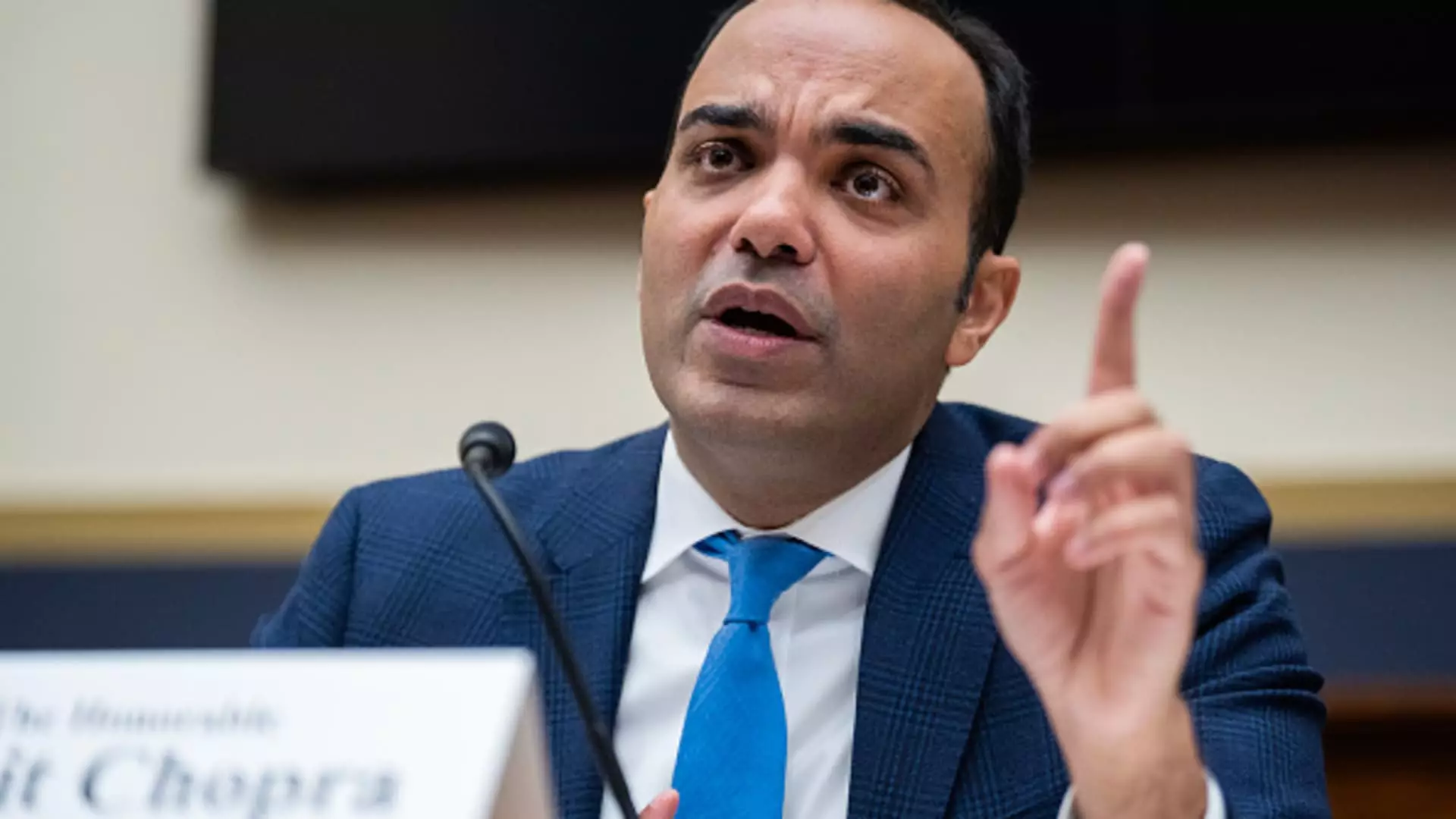The Consumer Financial Protection Bureau (CFPB) has unveiled a significant regulatory amendment aimed at transforming the landscape of overdraft fees imposed by banks. This latest rule is expected to result in a substantial fiscal relief for American consumers, with projections suggesting a saving of approximately $5 billion annually. The essence of this regulation is to curb the traditionally exorbitant overdraft fees, which have averaged around $35 per transaction, allowing banks instead to charge a modest $5 for overdrafts. Alternatively, institutions may opt to levy a fee that merely covers operational costs, or charge any fee, provided they transparently disclose the interest attached to such loans.
CFPB Director Rohit Chopra has taken a strong stance against what he describes as the exploitative practices of the banking sector regarding overdraft fees. His assertion that “the largest banks have exploited a legal loophole” resonates as a call to arms against systemic pricing practices that disproportionately burden vulnerable consumers. The intention here is not solely punitive but seeks to foster clearer communications about the financial products and services consumers rely on, potentially enhancing consumer empowerment.
Overdraft fees have been a lucrative avenue for revenue generation within the banking industry, with estimates indicating that around $280 billion has poured into bank coffers since the year 2000 through these fees. However, the revenue derived from overdraft fees has witnessed a gradual decline in recent years. Major players such as JPMorgan Chase and Bank of America have either reduced the financial burdens they impose on consumers or even eliminated the fees entirely. This shift may suggest a burgeoning awareness among both consumers and banks regarding the practices that have long been taken for granted.
Notably, the CFPB’s new rule specifically applies to banks and credit unions with assets exceeding $10 billion. This delineation underscores the regulator’s focus on large institutions that have historically been responsible for the bulk of problematic fee practices. The introduction of this rule is part of a wave of initiatives aimed at regulating financial institutions in a more consumer-friendly manner, marking a concerted effort from the CFPB.
Despite the apparent benefit for consumers, the new overdraft rule has ignited pushback from powerful banking associations. These groups have historically wielded considerable influence over policy-making, and they are now mobilizing against this rule. Their argument hinges on the potential drawbacks; they assert that capping overdraft fees could reduce consumers’ access to this financial service, compelling them to seek out less favorable alternatives like payday loans. Such claims raise questions about the broader implications of the CFPB’s regulatory moves and their actual impacts on consumer behavior and access to credit.
The ongoing conflict with industry groups reflects a larger narrative of regulatory tension prevalent in the U.S. financial landscape. For instance, a recent initiative aimed at limiting credit card late fees has faced significant legal hurdles. As banking officials strategize on how to best challenge the implications of the new rule, uncertainty looms about its implementation and enforcement, expected to take effect on October 1, 2025.
Adding another layer of complexity, the political landscape surrounding the regulation is volatile. With the impending transition to a new administration following a potential change in the presidential office, the fate of consumer protection measures such as the overdraft rule hangs in the balance. Experts predict that a shift in leadership at the CFPB could lead to the stagnation or outright repeal of this regulation, reversing gains made towards protecting consumers from predatory lending practices.
This transitional period also coincides with a widespread dialogue about financial literacy and consumer rights in America. As the industry braces itself for the regulatory changes, consumers must remain informed and vigilant regarding the financial products they encounter. Ultimately, this discussion highlights the need for a balanced approach that considers both the well-being of consumers and the operational realities of financial institutions, paving the way for an equitable financial future.


Leave a Reply